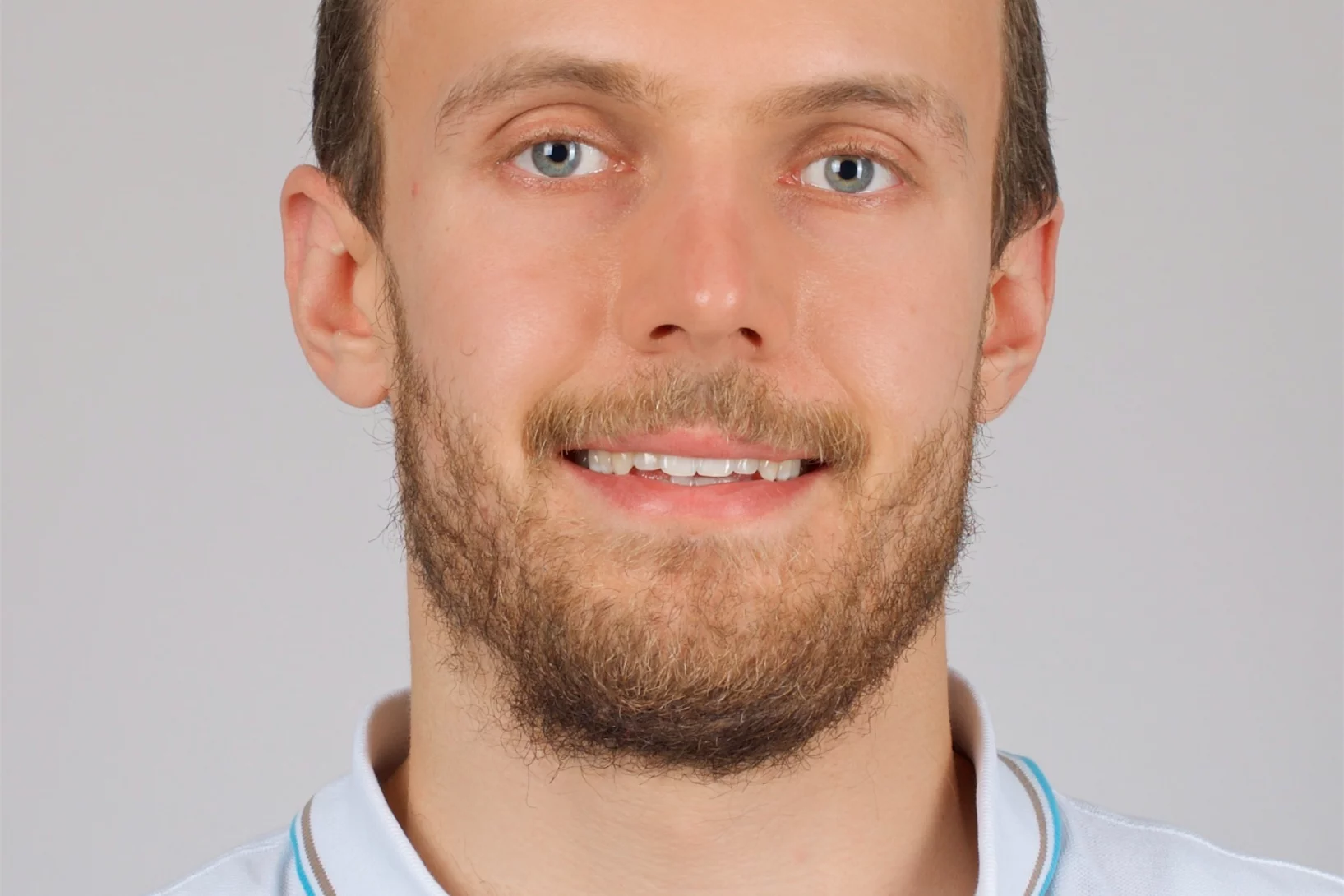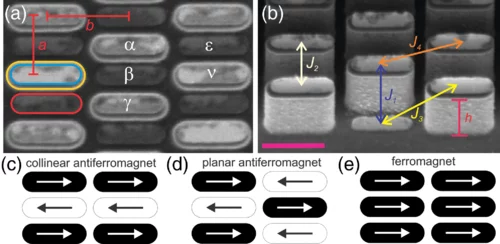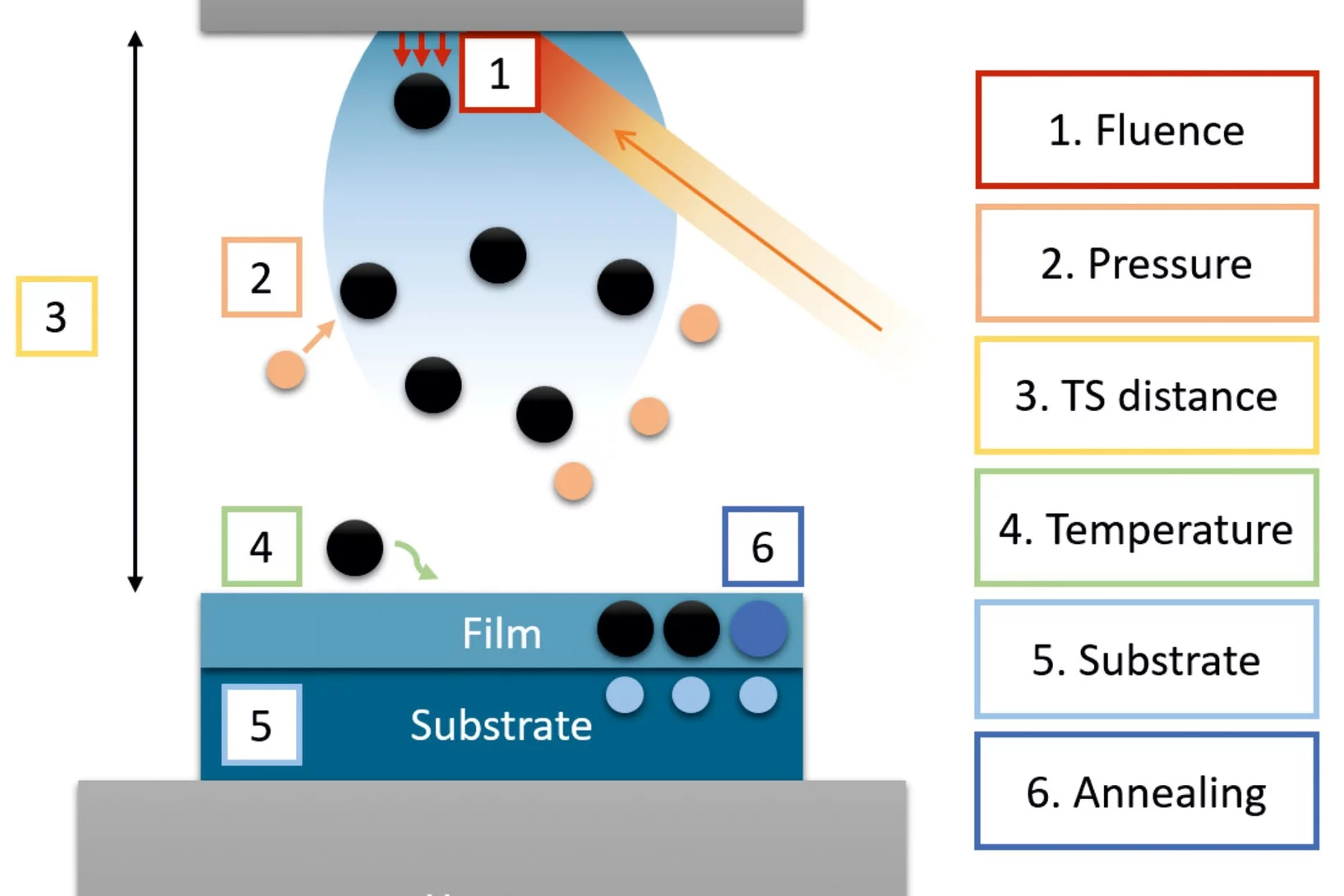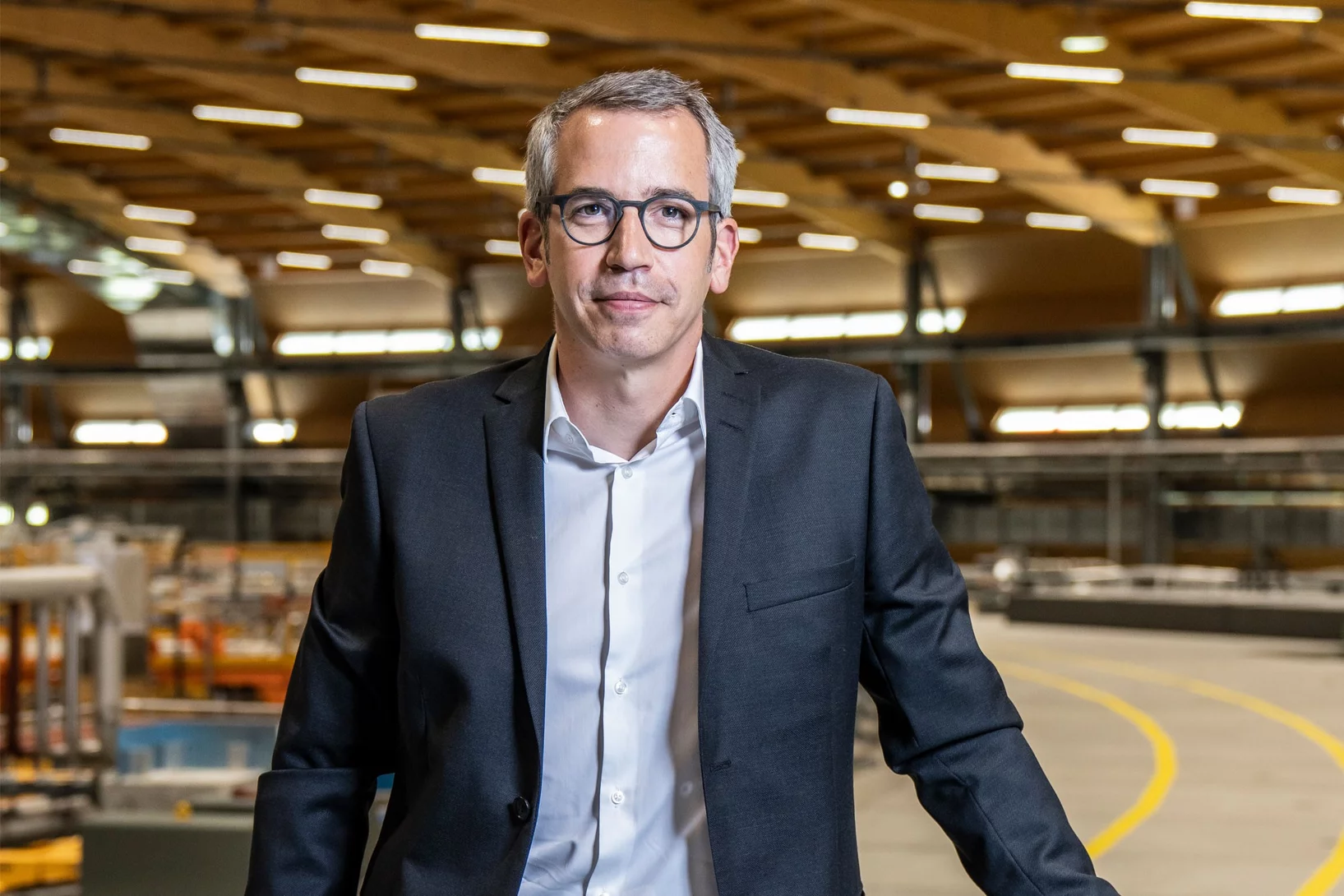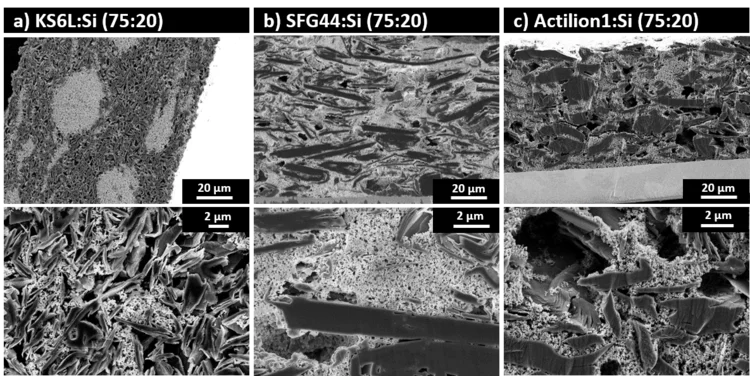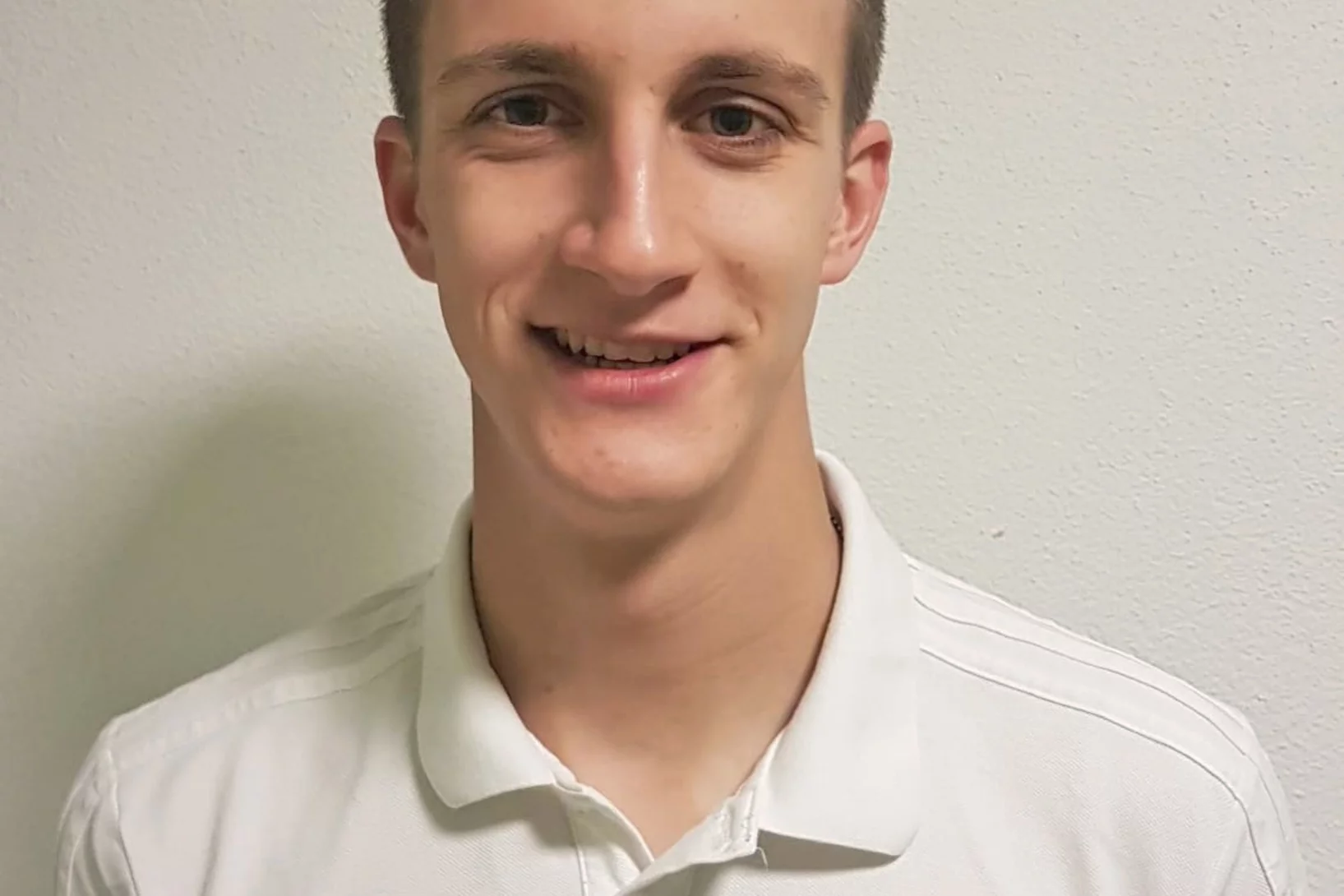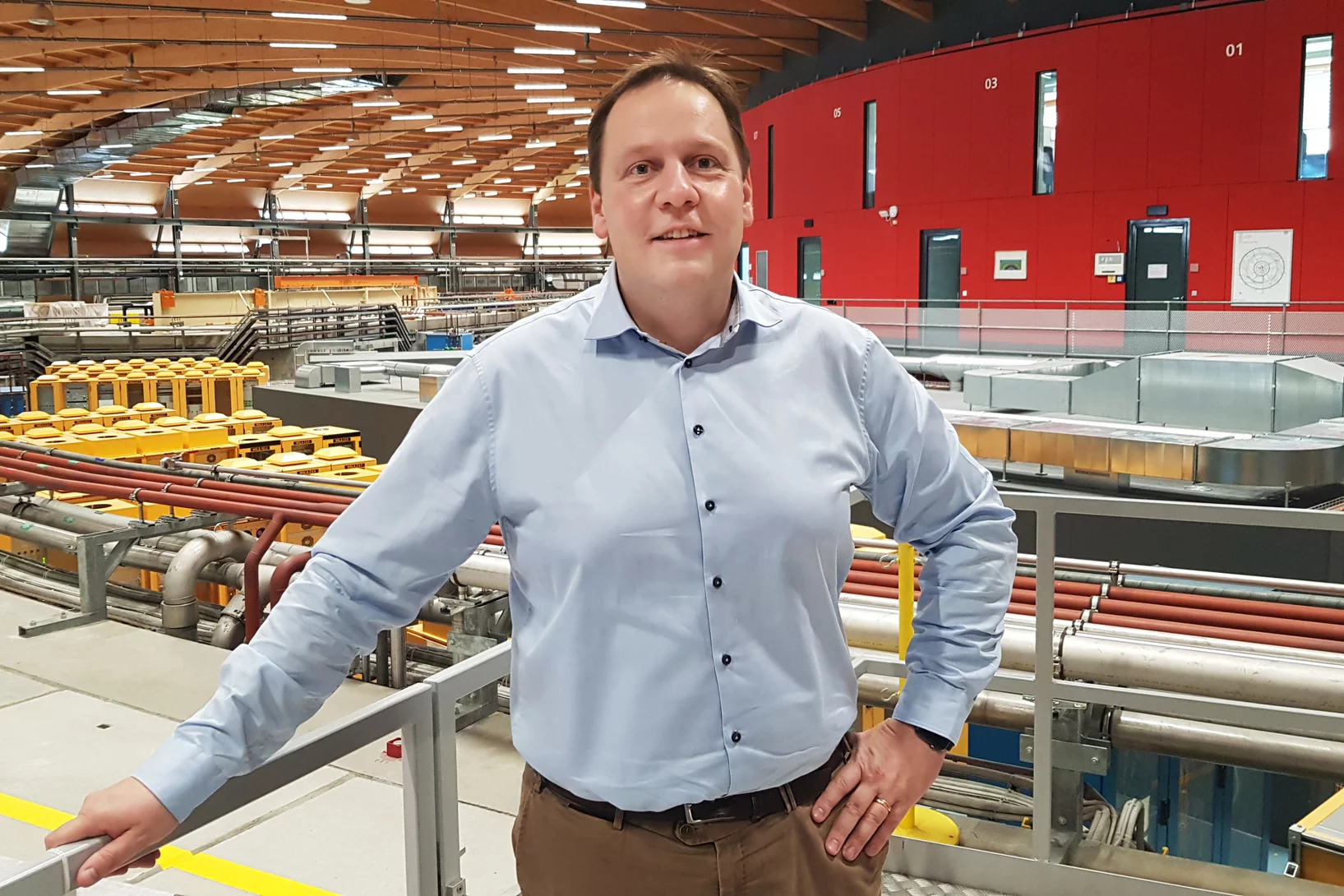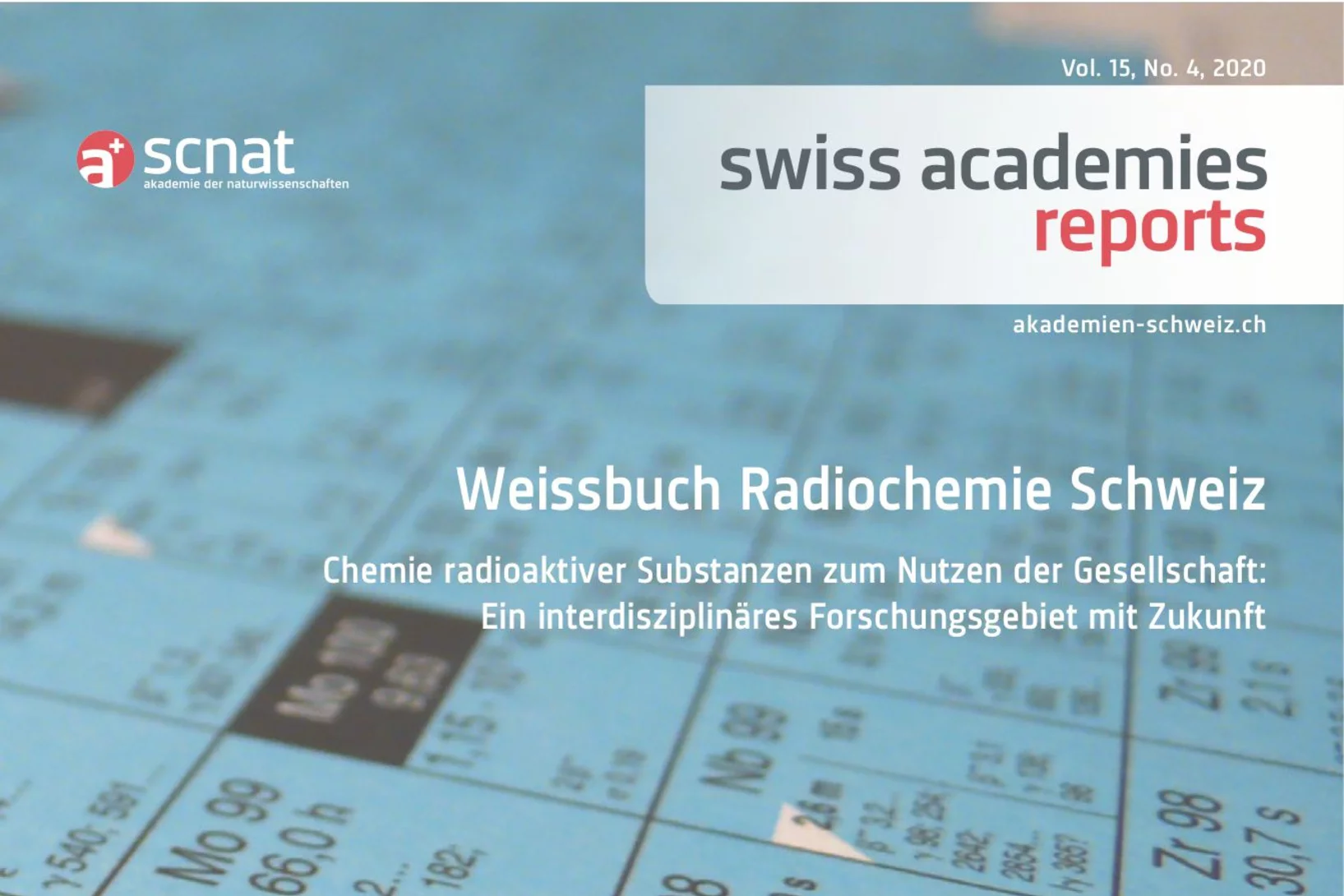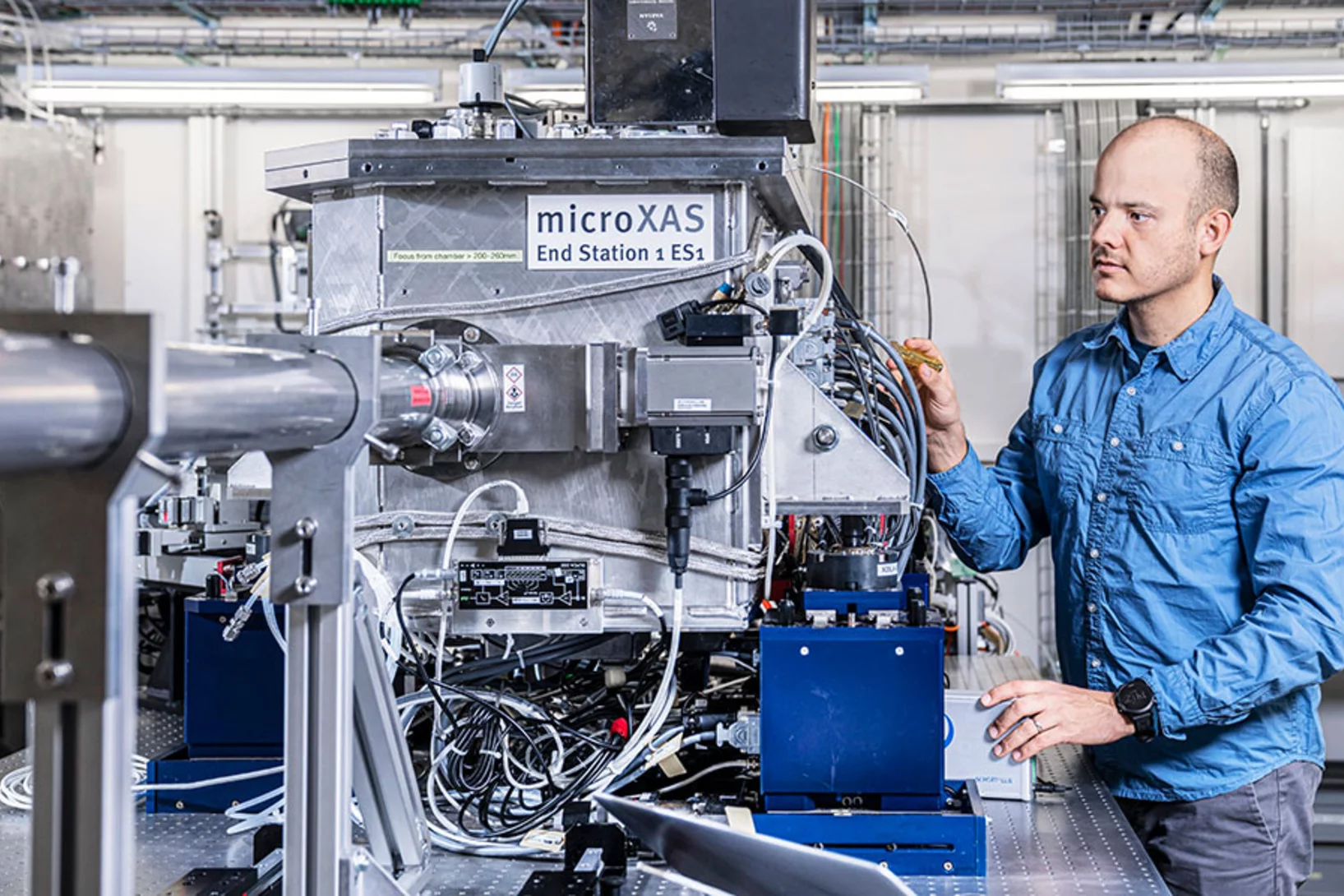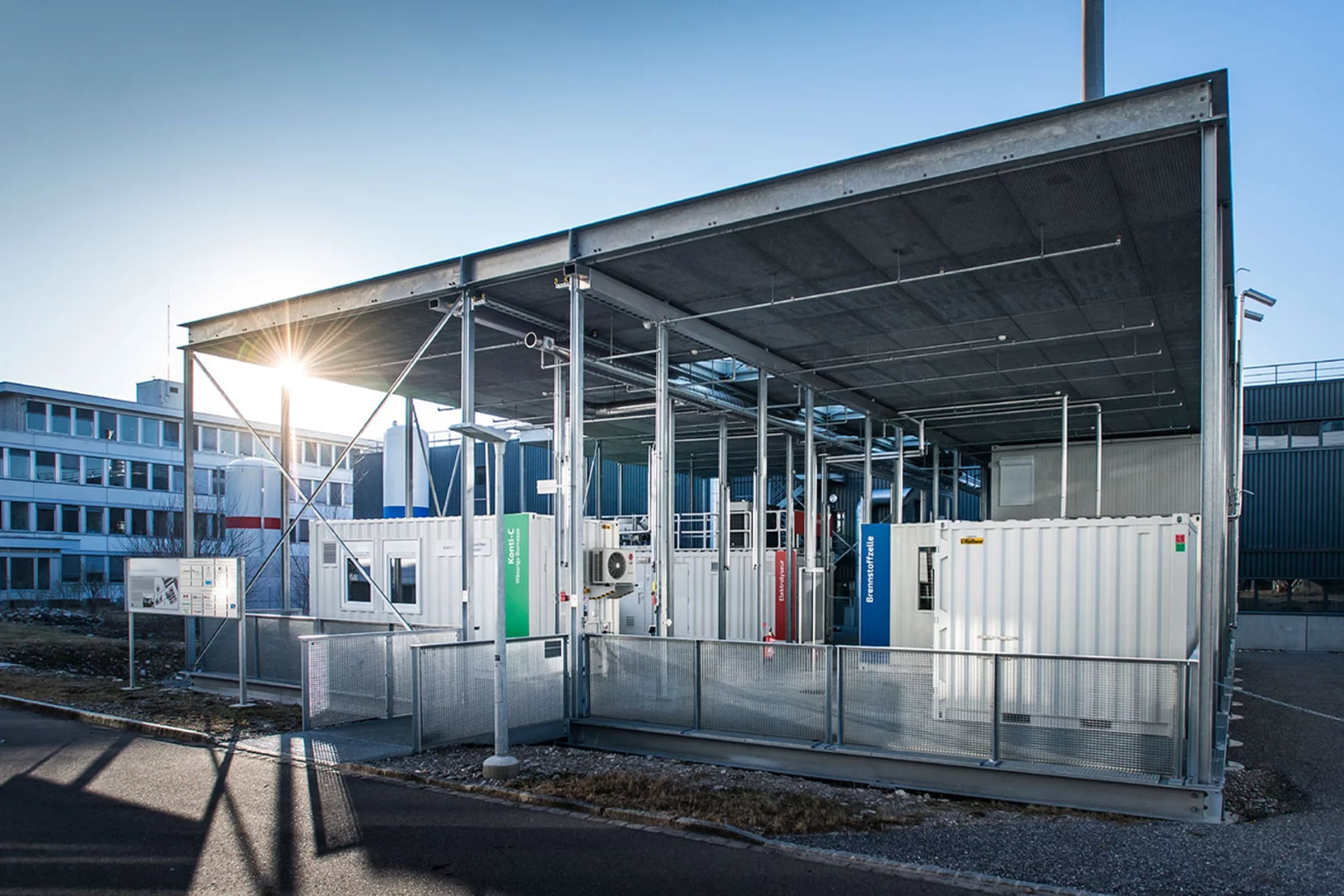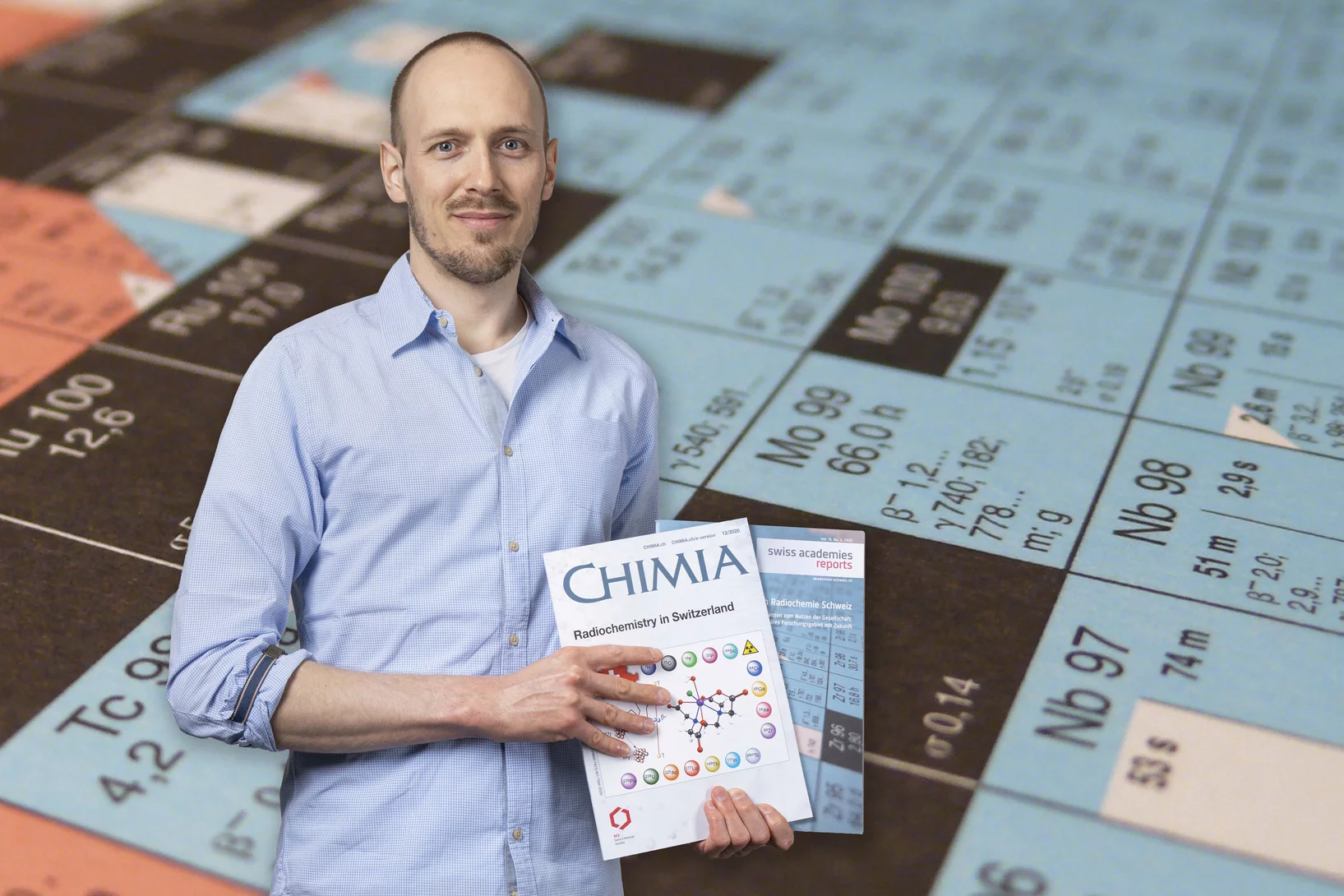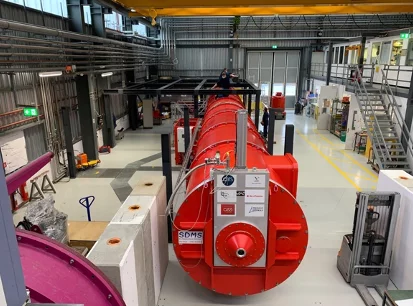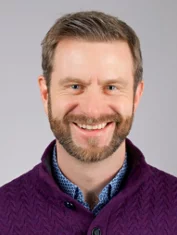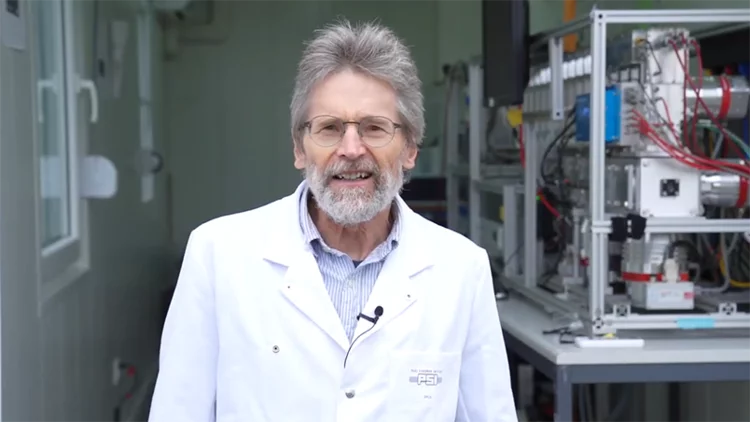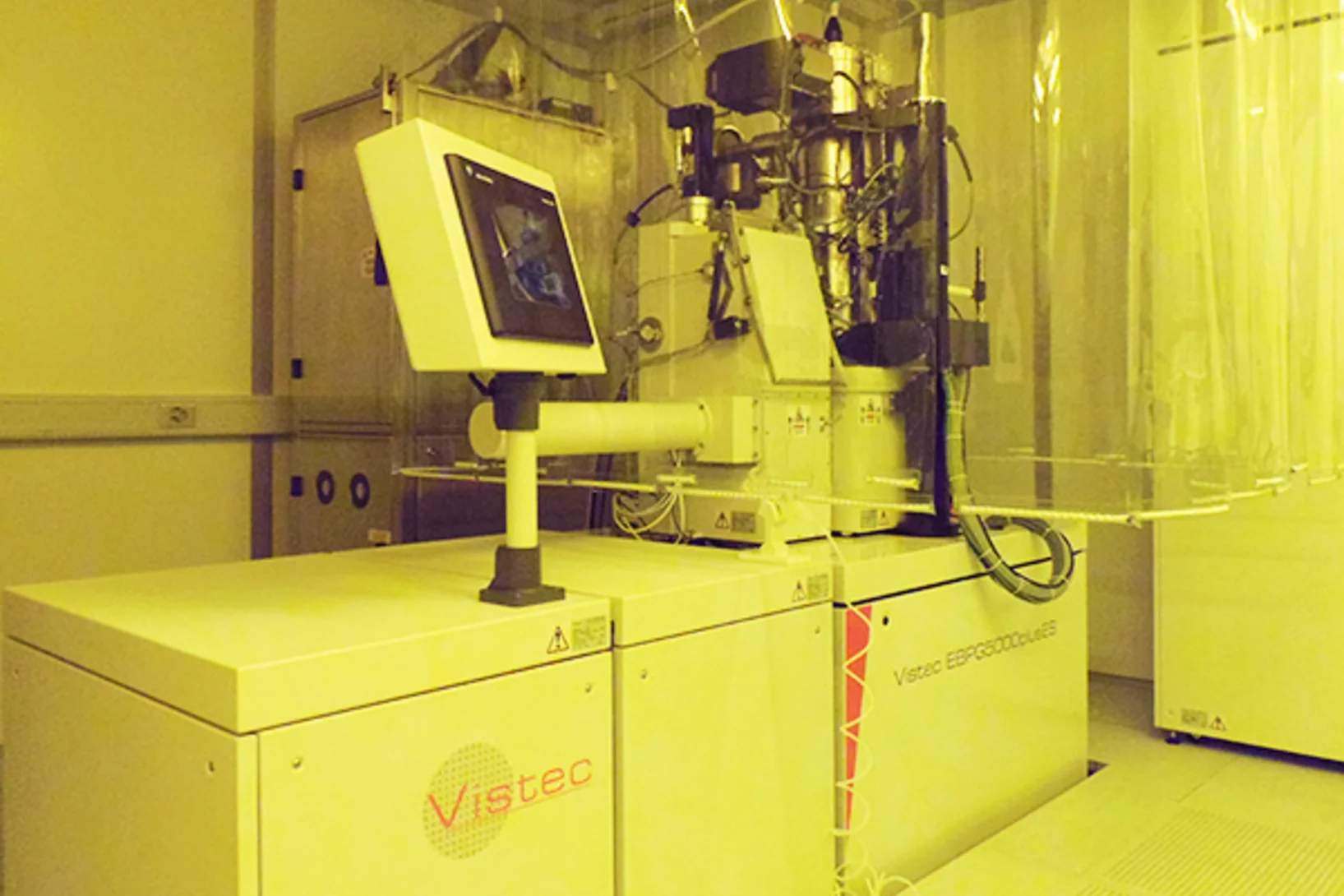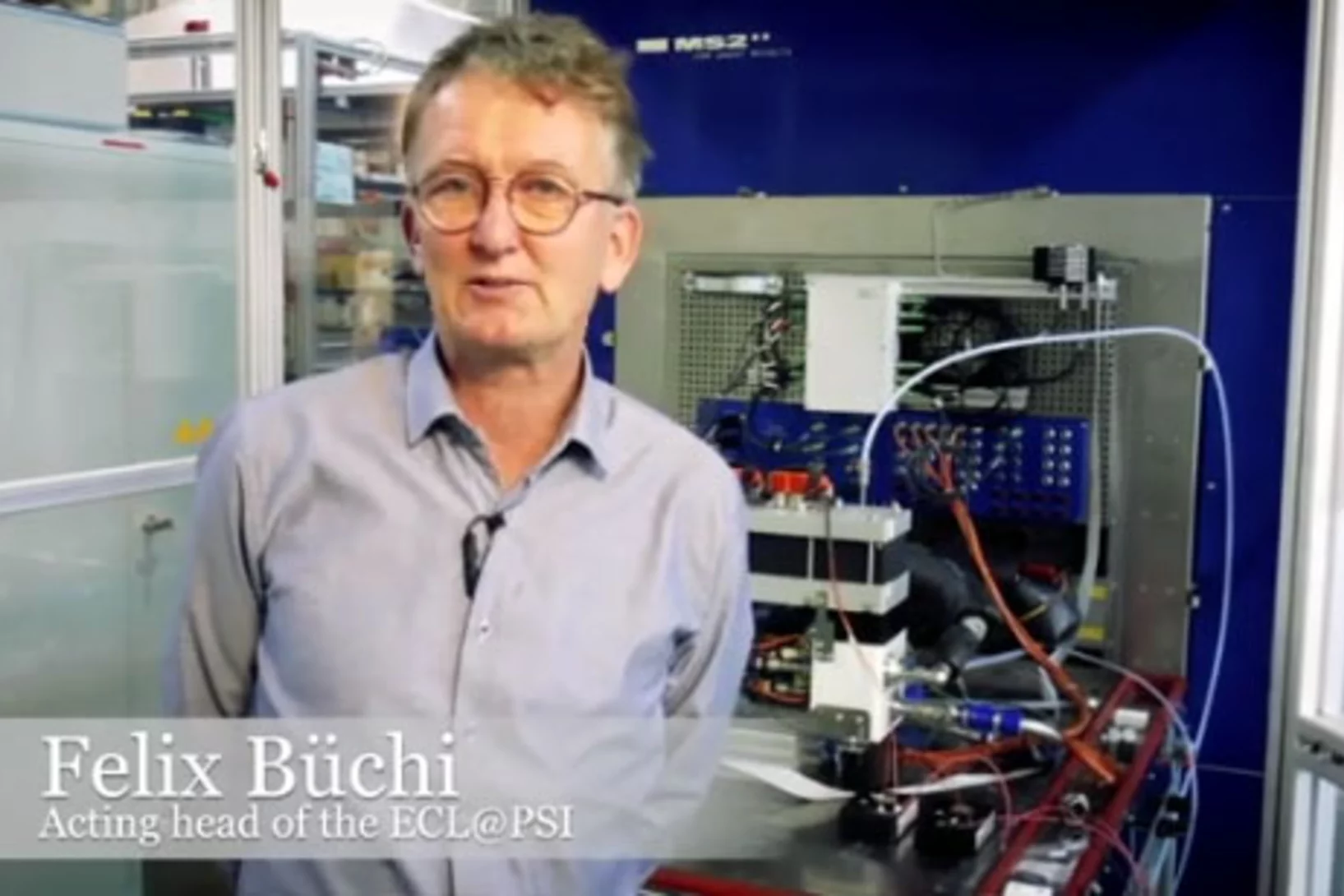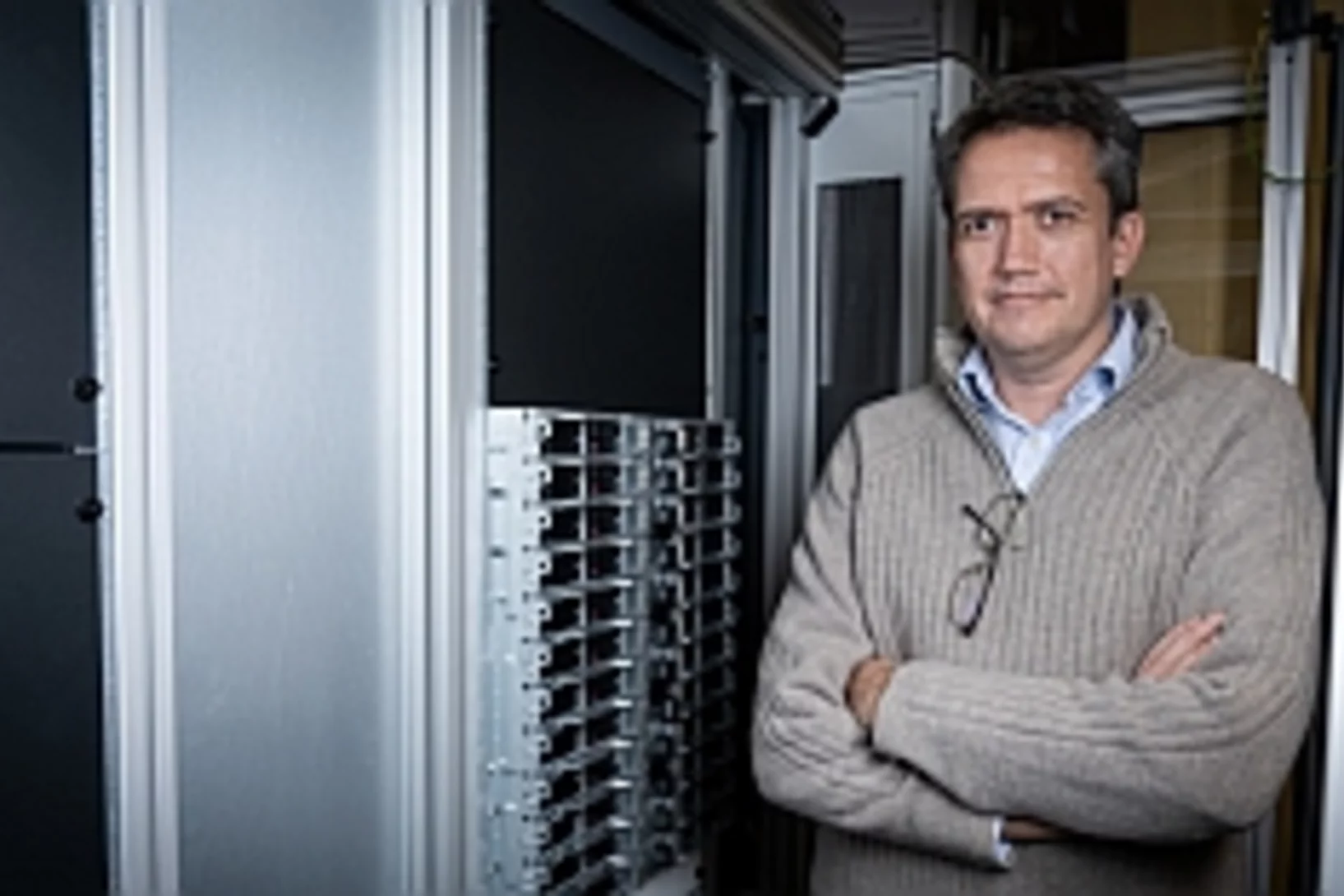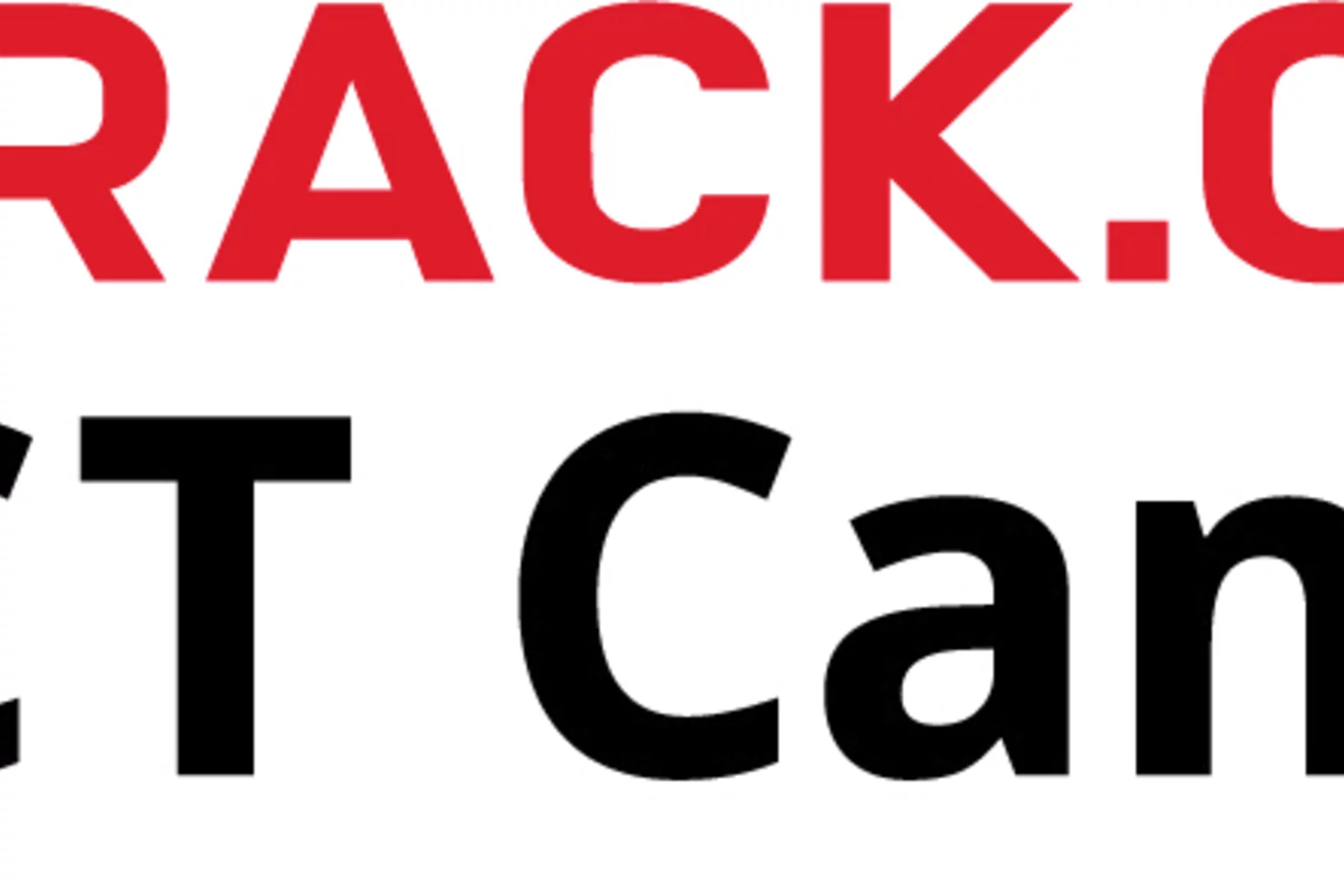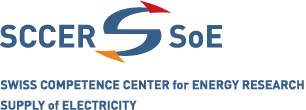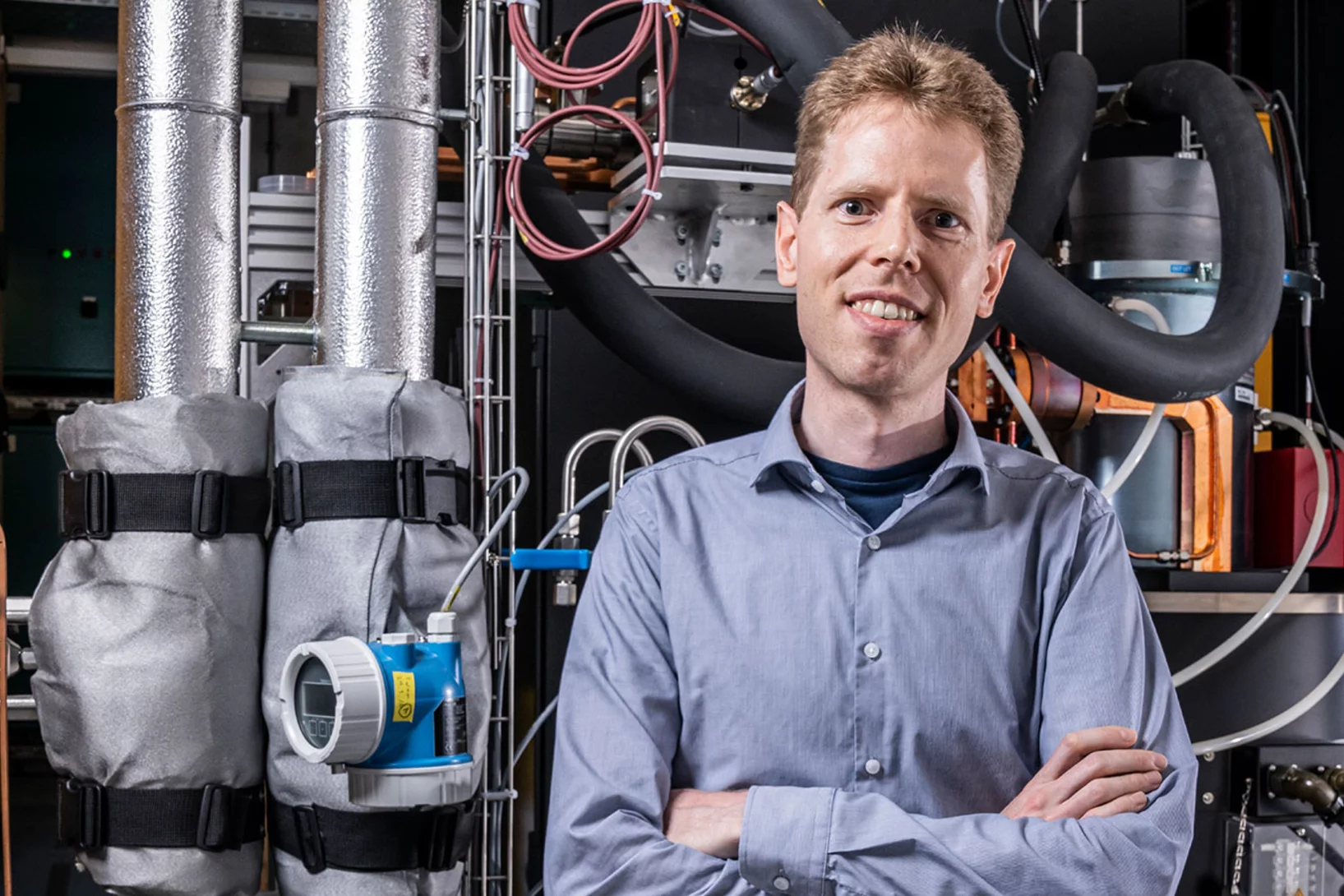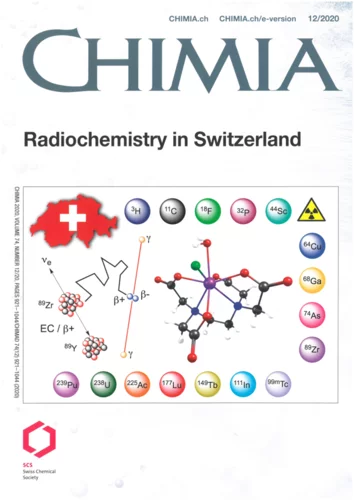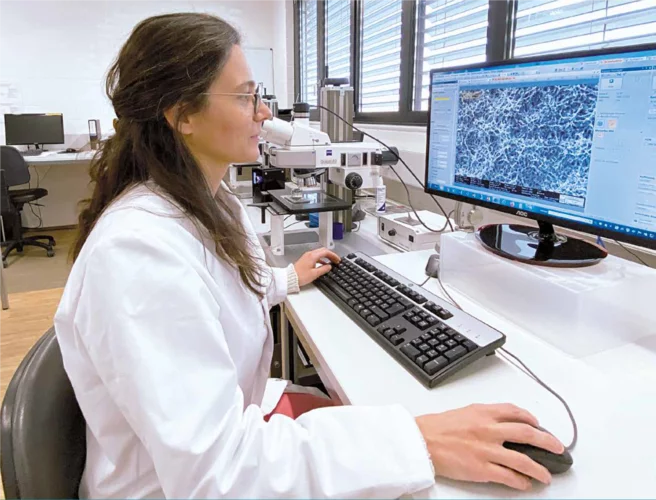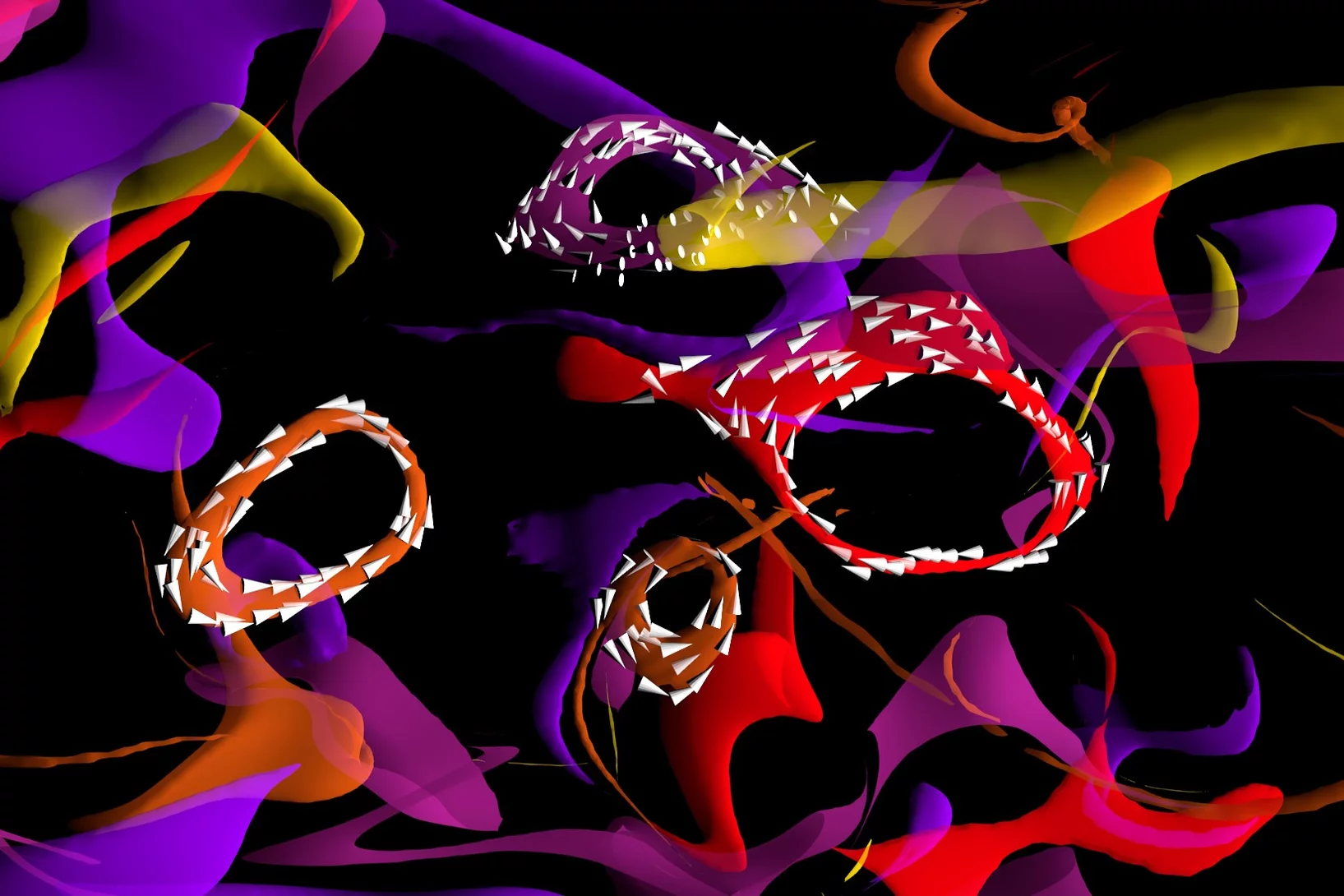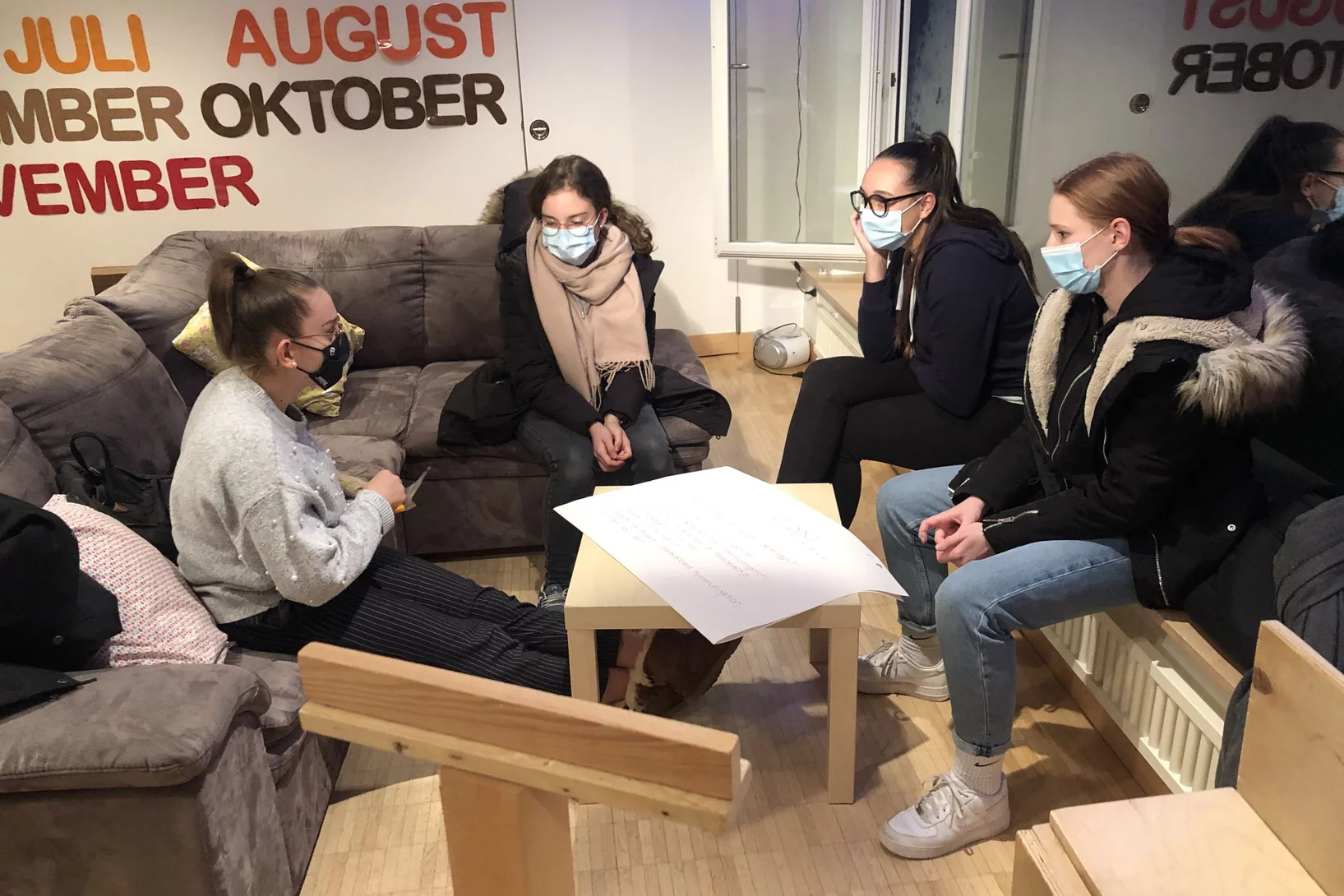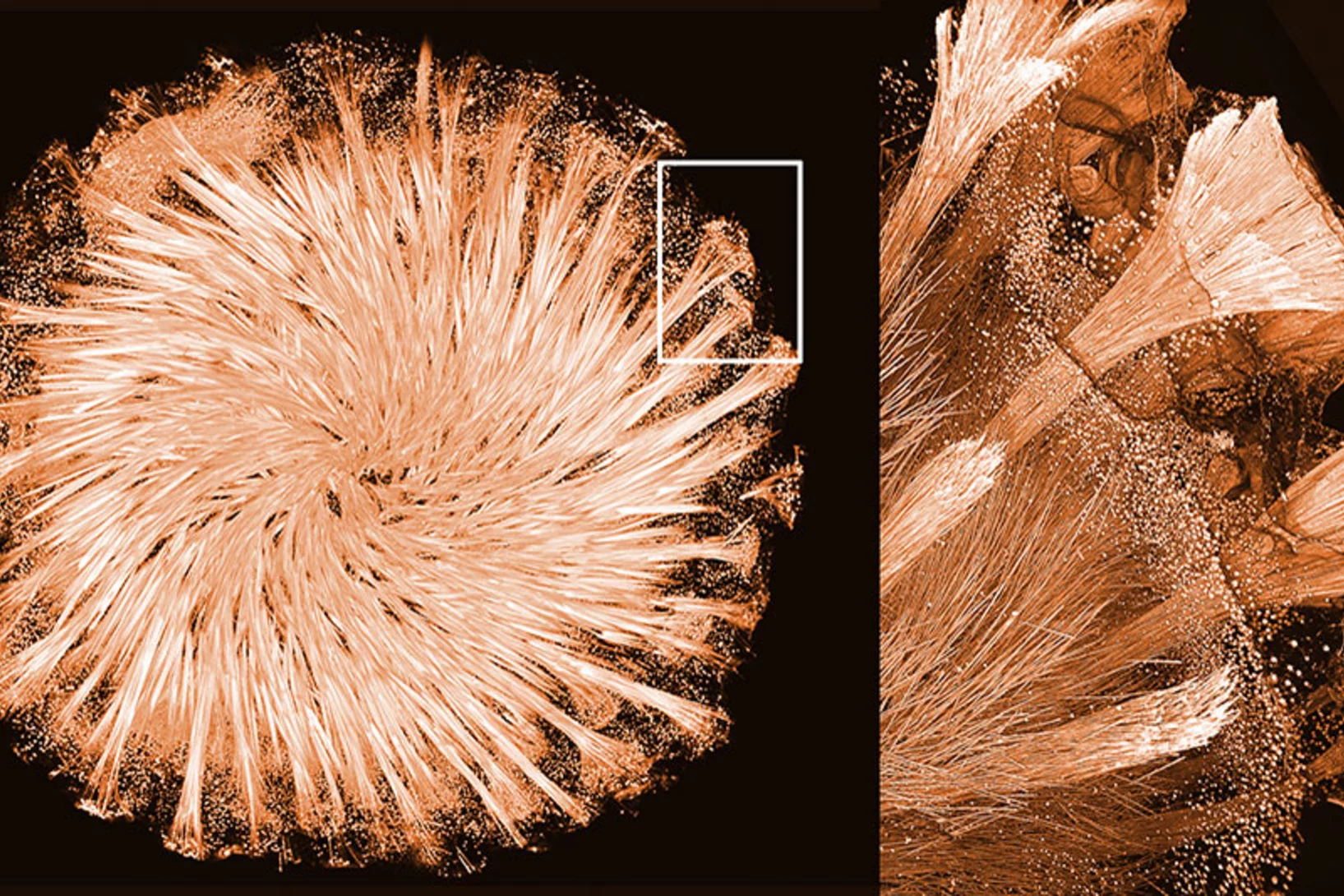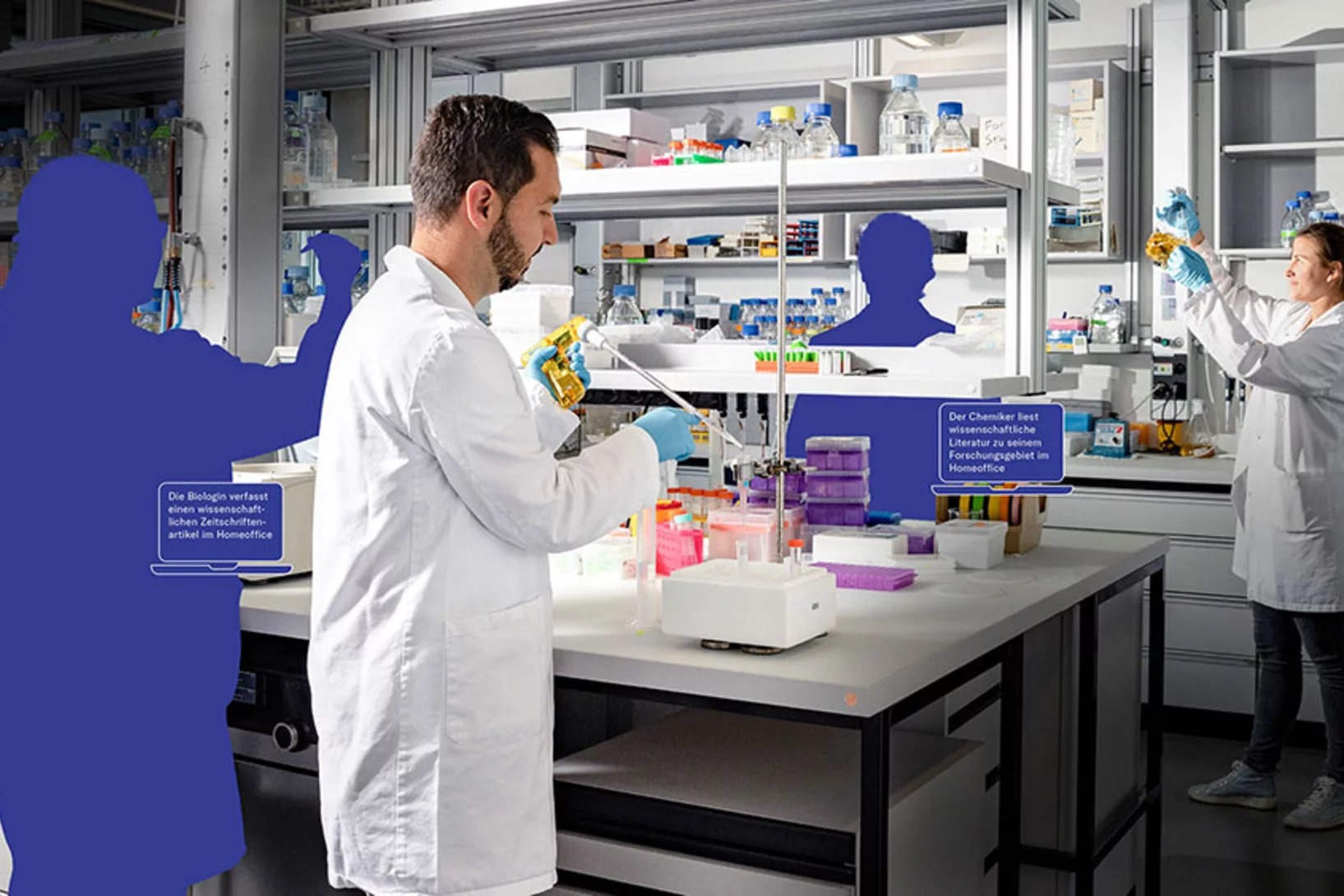Shifting away from nuclear energy, expanding solar and wind power, generating energy from biomass, reducing energy consumption. Switzerland is committed to becoming climate-neutral by 2050. An ambitious goal, which has become more urgent than ever due to the increasingly challenging geopolitical situation. How can a sustainable and resilient energy supply for Switzerland be established over the coming years? What's the optimal way to use renewable energy sources? What new technologies are especially promising? At PSI, researchers are seeking answers to these crucial questions.
Welcome Andreas Brenig
Andreas started in January as a PhD student in the van Bokhoven group. Andreas did his master thesis at the Technical University of Munich, TUM, under the supervision of Prof. Johannes Lercher. The title of Andreas’ thesis was “Kinetic modelling and characterization of bifunctional metal-acid catalysts for renewable diesel generation via deoxygenation”.
Geometrical Frustration and Planar Triangular Antiferromagnetism in Quasi-Three-Dimensional Artificial Spin Architecture
We present a realization of highly frustrated planar triangular antiferromagnetism achieved in a quasi-three-dimensional artificial spin system consisting of monodomain Ising-type nanomagnets lithographically arranged onto a deep-etched silicon substrate. We demonstrate how the three-dimensional spin architecture results in the first direct observation of long-range ordered planar triangular antiferromagnetism, in addition to a highly disordered phase with short-range correlations, once competing interactions are perfectly tuned. Our work demonstrates how escaping two-dimensional restrictions can lead to new types of magnetically frustrated metamaterials.
Pulsed Laser Deposition as a Tool for the Development of All Solid-State Microbatteries
All-solid-state lithium ion batteries (LIB) are currently the most promising technology for next generation electrochemical energy storage. Many efforts have been devoted in the past years to improve performance and safety of these devices. Nevertheless, issues regarding chemical and mechanical stability of the different components still hinder substantial improvements. Pulsed laser deposition (PLD) has proved to be an outstanding technique for the deposition of thin films of materials of interest for the fabrication of LIB. Thanks to its versatility and possible fine tuning of the thin film properties, PLD promises to be a very powerful tool for the fabrication of model systems which would allow to study in detail material properties and mechanisms contributing to LIB degradation. Nevertheless, PLD presents difficulties in the deposition of LIB components, mainly due to the presence of elements with large difference of atomic mass in their chemical composition. In this review, we report the main challenges and solution strategies used for the deposition through PLD of complex oxides thin films for LIB.
PSI equips the Swiss Light Source SLS for the future
Green light for SLS 2.0: The planned upgrade of the Swiss Light Source SLS can proceed; the funding is provided for within the framework of the ERI Dispatch for 2021-2024, which has been approved.
Graphite Anodes with Si as Capacity-Enhancing Electrode Additive
Silicon is a long-standing candidate for replacing graphite as the active material in negative electrodes for Li-ion batteries, due to its significantly higher specific capacity. However, Si suffers from rapid capacity loss, as a result of the large volume expansion and contraction during lithation and de-lithiation. As an alternative to pure Si electrodes, Si could be used as a capacity-enhancing additive to graphite electrodes.
Oliver Wernli aus Remigen erhält den Pestalozzi Stiftepriis 2020
Der Preisträger Oliver Wernli ist einer der besten Konstrukteure EFZ der Schweiz.
From synchrotron to CEO
Roger Herger wrote his diploma thesis and doctoral dissertation on X-ray diffraction of complex metal oxides at the Swiss Light Source (SLS) synchrotron. At the end of June 2020, he founded the high-tech startup maXerial, together with two business partners. Their goal: to combine industrial X-ray technology with artificial intelligence. We trace his path from research to entrepreneur and show how cutting-edge PSI know-how and laboratory-based X-ray technology ideally complement each other to solve the challenges of the Swiss high-tech industry by means of data-driven materials development.
Weissbuch Radiochemie Schweiz
In December 2020, the Swiss Academy of Sciences (SCNAT) published its white book on radiochemical education in Switzerland. The report was authored under the lead of Prof. Dr. Roger Alberto (University of Zurich), Dr. Mario Burgener (Spiez Laboratory), and Prof. em. Dr. Heinz W. Gäggeler (University of Bern/Paul Scherrer Institute) and comprises contributions from many experts on the topic from various institutions throughout Switzerland. The white book highlights the imminent loss of experts in the field of radiochemistry and provides solutions to counteract this development.
Look Inside a Chemical Reactor
Operando X-ray spectrotomography allows scientists to look inside of functioning chemical reactors. A research team at Karlsruhe Institute of Technology (KIT), at Paul Scherrer Institute PSI and at the European Synchrotron Radiation Facility (ESRF) in France have employed this method successfully.
Foundations for the energy system of tomorrow
On the way to a sustainable energy system, technologies that help to flexibly convert and efficiently store energy are becoming increasingly important. ReMaP, a novel research platform, aims to investigate these urgent issues under realistic conditions.
Radiochemistry at ETH Zurich
As of December 10, 2020, the ETH Zurich appointed PSI’s Prof. Dr. Patrick Steinegger as assistant professor of radiochemistry (tenure track). Thus, the ETH domain took first counter measures against the imminent loss of radiochemical expertise in Switzerland, emphasized in the “Weissbuch Radiochemie Schweiz” by the Swiss Academy of Sciences (SCNAT). Furthermore, the December issue of CHIMIA (Swiss Chemical Society) invited to present the diverse radiochemical activities throughout the country.
Long-range coherent dynamics of bound electrons in a solid
Ultrafast long-range coherent dynamics in electronic structure excited by THz pulses and studied using free electron laser based resonant X-ray diffraction.
A new small angle neutron scattering instrument arrives at SINQ from LLB
In 2018 an agreement between the Laboratoire Léon Brillouin (LLB) and Paul Scherrer Institut has been signed with the aim to jointly operate a new small angle neutron scattering (SANS) instrument at the Swiss spallation neutron source SINQ.
Marc Janoschek appointed Associate Professor ad personam at University of Zurich
Marc Janoschek, the head of the Laboratory for Neutron and Muon Instrumentation (LIN), was appointed as Associate Professor ad personam for experimental physics – correlated quantum materials at the University of Zurich starting February 1, 2021.
Seven years SCCER Mobility
Synthesis book reviews history, milestones and achievements of the center
The role of aerosols in the Coronavirus pandemic
It now seems certain that Covid-19 can be transmitted via airborne particles. But how are these particles produced? How quickly can transmission occur and how can we protect ourselves? PSI aerosol researcher Urs Baltensperger summarises the most important facts on this issue.
Installation of the new Pattern generator for Raith/Vistec EBPG5000Plus e-beam writer
Supported by SNF R'Equip, a new 20bit low-noise pattern generator for our 100 keV direct write electron beam lithography system Raith/Vistec EBPG5000Plus has been successfully installed. This allows for faster exposures (up to 125MHz stepping frequency) with better placement accuracy within the writing field up to 1x1 mm². The so called Universal Pattern Generator (UPG) supports now a broad spectrum of primitiv shapes, which can dramatically improve the quality of exposed nanostructures by optimized fracturing of designs.
LEC Contribution to the SCCER Mobility Project
Two groups from the Electrochemistry Laboratory, together with a team from ZHAW and EPFL have developed a novel evaporative cooling concept for polymer electrolyte fuel cells from the material to the cell level.
The 5 min movie explains and summarizes the development.
The librarian of the petabytes
It is necessary to prepare now for the planned upgrade of the Swiss Light Source SLS. In order to do justice to future research, Alun Ashton is estimating the amount of data that future experiments will produce.
Der ICT-Campus Lenzburg ist eröffnet
Seit 2020 ist das PSI Mitglied beim «ICT-Campus», dem vielversprechendsten Informatik und MINT Nachwuchs Förderungsprojekt der Schweiz. Am 21.10.2020 wurde der neue Standort in Lenzburg mit prominenter Beteiligung eröffnet. Dabei wurden, wegen der Pandemie, die modernsten Mittel eingesetzt.
Oxygen Evolution Reaction Activity and Underlying Mechanism of Perovskite Electrocatalysts at Different pH
PSI researchers have studied the how the electrolyte pH values influence the oxygen evolution reaction (OER) activity and stability of different promising perovskite oxide catalysts for application as anodic electrodes in alkaline water electrolyzers. The OER activity and stability decreased decreasing the electrolyte pH values. By combining electrochemical studies and operando X-ray absorption spectroscopy measurements, it has been suggested that different reaction mechanisms dominate in alkaline and near-neutral electrolyte pH region.
Key activity descriptors of nickel-iron oxygen evolution electrocatalysts in the presence of alkali metal cations
Ni-Fe oxyhydroxide is among the most active oxygen evolution electrocatalysts. Electrolyte alkali metal cations modify the activity and reaction intermediates, however, the exact mechanism is at question due to unexplained deviations from the cation size trend. Our X-ray absorption spectroelectrochemical results show that the OER activity follows the variations in .electrolyte pH rather than a specific cation. Our DFT-based reactivity descriptors confirm the conclusions of an indirect pH effect.
Sustainability Assessment of Potential Areas for Deep Geothermal Energy Systems in Switzerland
In this study, scientists from the Paul Scherrer Institute (PSI) assessed the suitability of potential areas for Deep Geothermal Energy (DGE) systems in Switzerland with regard to their sustainability.
Milestone for the second beamline of SwissFEL
At the X-ray free-electron laser SwissFEL of the Paul Scherrer Institute PSI, the second beamline is currently being put into operation. With Athos, researchers want to understand how catalysts work or how biomolecules cause hereditary diseases.
CHIMIA: Radiochemistry in Switzerland
The December issue of CHIMIA of the Swiss Chemical Society (SCS) focused on the radiochemical activities throughout Switzerland. Scientists of the Laboratory of Radiochemistry contributed with a number of articles ranging from topics of fundamental sciences to applied research, thereby reflecting on the diverse projects carried out in our laboratory.
From research at PSI to the Aargauer SME Medicoat AG
Even as a doctoral student at PSI, Agnese Carino wanted to put the findings of her research into practice and did not hesitate to present her business idea to the CEO of Medicoat AG, Philipp Gruner. She wanted to develop a novel coating for small implants, which accelerates the recovery of the patient, into a product. Supported by the Hightech Zentrum Aargau this was the starting point of the joint SNI project NanoCoat. Carino was awarded the Founder Fellowship by PSI for her business idea. This program supports the transition from promising research findings to marketable products. We are pleased that Dr. Carino is now working with Medicoat to advance the commercialization of this technology.
Magnetic vortices come full circle
The first experimental observation of three-dimensional magnetic ‘vortex rings’ provides fundamental insight into intricate nanoscale structures inside bulk magnets, and offers fresh perspectives for magnetic devices.
KIWI-Ausbildungssitzung - XL vom 24.11.20
14 Frauen und ein Mann trafen sich zur späten Stunde
Scientists determine the structure of glass-shaping protein in sponges
Measurements at the Swiss Light Source SLS have helped to understand how the only known natural protein-mineral crystal is formed. It is part of the fascinating glass skeleton of sponges.
Extraordinary times at PSI
In view of the coronavirus pandemic, the Paul Scherrer Institute changed to the extraordinary situation in spring 2020. By then, only a maximum of 20 percent of all PSI employees work at PSI. Five pictures show how research and operations at PSI nevertheless continued.

